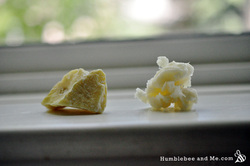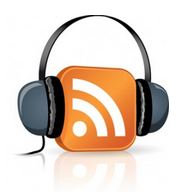Different butters perform each of these functions to a different degree.
Good Substitutes For Mango Butter: In the cosmetics industry, seven butters are considered substitutes for each other: cocoa, illipe, kokum, sal, shea, mango and palm but they are not perfect substitutes. Mango butter has a closer fatty acid profile to shea butter than to cocoa butter so they are better substitutes for each other. That said, mango butter is less moisturising than shea butter. Products containing both mango butter and another soft butter like shea butter will result in a better feel on hair (and skin). Don't blend mango and avocado better - they are not the best combo - they can be a little drying. Fat Composition Of Mango Butter:
Mango butter contains tannins, this gives a drier feel compared to other butters. That said, tannins give mango butter more anti-inflammatory, anti-oxidant, anti-fungal and anti-bacterial properties; this is why I use it in some of my "Soothe Me" DIY Hair Recipes for the scalp. Overall, my reading led me to conclude that mango butter is better for oilier hair types - or for skin butters; to be used in hair I would always combine it with another greasier butter or oil for added moisture.  Kernel inside a mango fruit. Kernel inside a mango fruit.
Melting Point Of Mango Butter: 30–37°C (86–99 °F)
It is softer than shea butter. This means it will melt quite easily when you rub it in your hands to put it in your hair. It doesn't smell like mango because it is extracted from kernel not the juicy fleshy fruit. 
Get your FREE ebook on How To Grow Long, Healthy Natural Kinky or Curly Hair. You might also like: Neno Natural's DIY Hair Recipes References: swiftcraftmonkey: whipped mango butter, butter tutorial, butter-n-bars.com,

Different butters perform each of these functions to different degree therefore it is better to compare one butter to another rather than just stating what a butter does. Shea butter offers a little protection from UV light because it contains something called cinnamic acid ester.
Good Substitutes For Shea Butter: In the cosmetics industry, seven butters are considered substitutes for each other: cocoa, illipe, kokum, sal, shea, mango and palm but they are not perfect substitutes. The best substitutes to shea butter are: mowrah, cupuacu and mango butter. Mango butter is less moisturising than shea butter though because it contains more tannins. If you use mango butter rather than shea butter in a DIY Hair Recipe you should add greasier oils to compensate for the less greasy mango butter.
Compared to cocoa butter shea butter has a little more stearic acid, oleic acid and polyusaturated fats but about 3 times less palmitic acid.
I do like cocoa butter but I always use it in collabo with a much softer butter. I use 15% cocoa butter in my "Soothe Me" Whipped Butter and the texture is super, super creamy.  Shea Nut Shea Nut
Melting Point Of Shea Butter: 37 °C (99 °F), i.e. body temperature.
This means it will melt quite easily when you rub it in your hands to put it in your hair. 
Get your FREE ebook on How To Grow Long, Healthy Natural Kinky or Curly Hair. You might also like: Neno Natural's DIY Hair Recipes References: wikipedia.org, swiftcraftmonkey: on various butters and on shea butter (note that swift's focus is skin not hair), lush, hyperphysics, hairloss-research.org, humblebeeandme.com
Different butters perform each of these functions to a different degree.
Compared to other butters cocoa butter is relatively hard. This means that any hair butter or moisturisers with cocoa butter will tend to get thicker or harder over time. Good Substitutes For Cocoa Butter: In the cosmetics industry, seven butters are considered substitutes for each other: cocoa, illipe, kokum, sal, shea, mango and palm but they are not perfect substitutes. Illipe is apparently considered to be the best substitute for cocoa butter because it has a very similar fatty acid profile. However, illipe contains 3 times more vitamin e (tocopherols). It also has higher phytosterol levels so illipe would be more beneficial to you than cocoa butter if your scalp is inflammed or itchy. My research suggests that kokum and sal butter are the next best alternatives to cocoa butter. Sal butter also has a similar melting point to cocoa butter. Fat Composition Of Cocoa Butter:

Melting Point Of Cocoa Butter: 34–38 °C (93–100 °F)
This means it will melt quite easily when you rub it in your hands to put it in your hair. 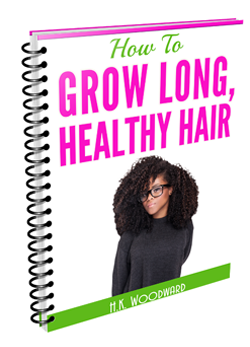
Get your FREE ebook on How To Grow Long, Healthy Natural Kinky or Curly Hair. You might also like: References: wikipedia.org, swiftcraftmonkey, 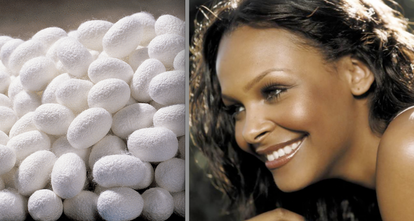
If your hair has adequate protein, then adding even more protein will cause it to become "hard, inelastic and rigid". Ultimately, this protein overuse will lead to protein-induced (or moisture deficient) hair breakage.
Why is protein included in many hair products? The protein structure of relaxed hair is compromised by the relaxing process. Extra protein is need to replace the protein that has been lost. Because many women have relaxed hair many products naturally include lots of protein. Natural hair on the other hand tends to have adequate protein so protein overuse is a real risk. Which products contain protein? Most products contain some protein the difference is simply the concentration of the protein. What form does the protein take? Protein-rich deep conditioner usually contain hydrolyzed proteins. Hydrolyzed proteins are proteins that have been broken down to a small size so that they can be taken up more easily into the hair fibre. These smaller proteins bind quickly and aggressively to hair fibres. What types of products are rich in hydrolyzed protein?
What should you look out for on an ingredients list? If you have protein sensitivity you will want to avoid products that have one or more of the following listed in the top ingredient. Generally, products list the ingredients used in the highest concentration first so if one these is less than 5th on the list there probably isn't much in there. However, a) some marketers try to trick people with alphabetical listings! AND b) you can't tell whether being listed 4th means there is 30% of that ingredient or 3%!
This should help you understand which products have a lot of protein and which products do not. Achieving the right protein/moisture balance will help you retain more length. 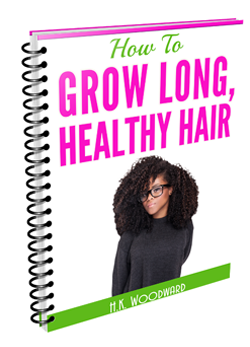
Get your FREE ebook on How To Grow Long, Healthy Natural Kinky or Curly Hair. References: The Science of Black Hair by Audrey Davis-Sivasothy (Unit 2, Chapter 6) |
I now blog about wealth creation - so if you have any money questions meet me there, you can do all sorts of cool things like leave me a voicemail.
By Heather Katsonga-Woodward
I was a natural hair blogger and mixtress living between London & Chicago from 2012 to 2017. I always thought I was 4C but some say 4B; images below - you decide! Heather xx Categories
All
Archives
November 2016
|




